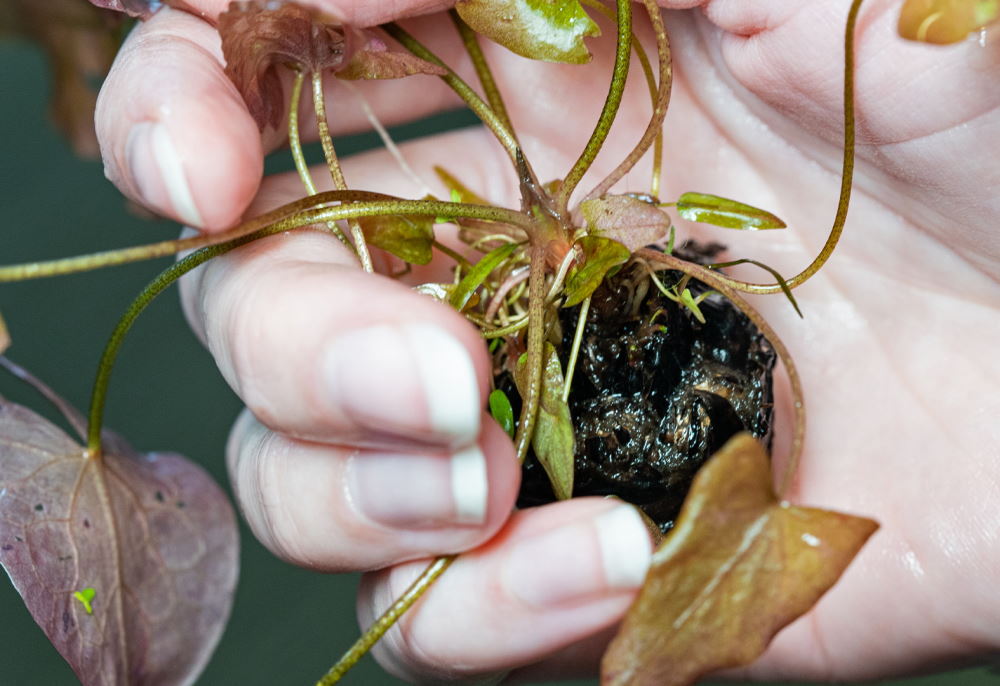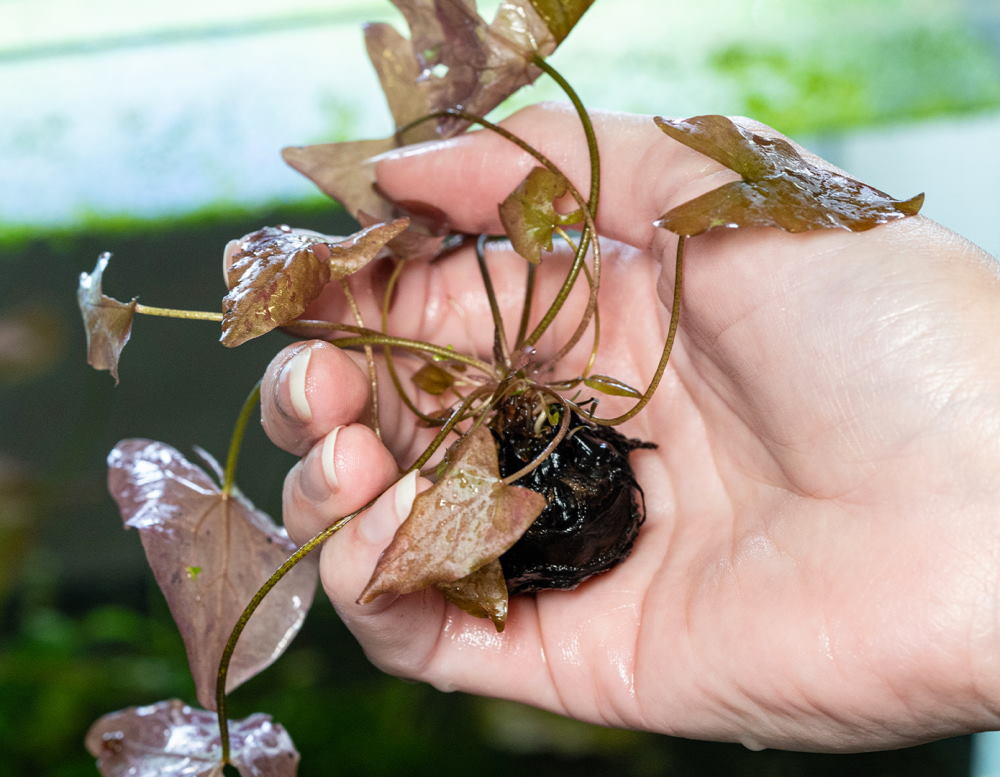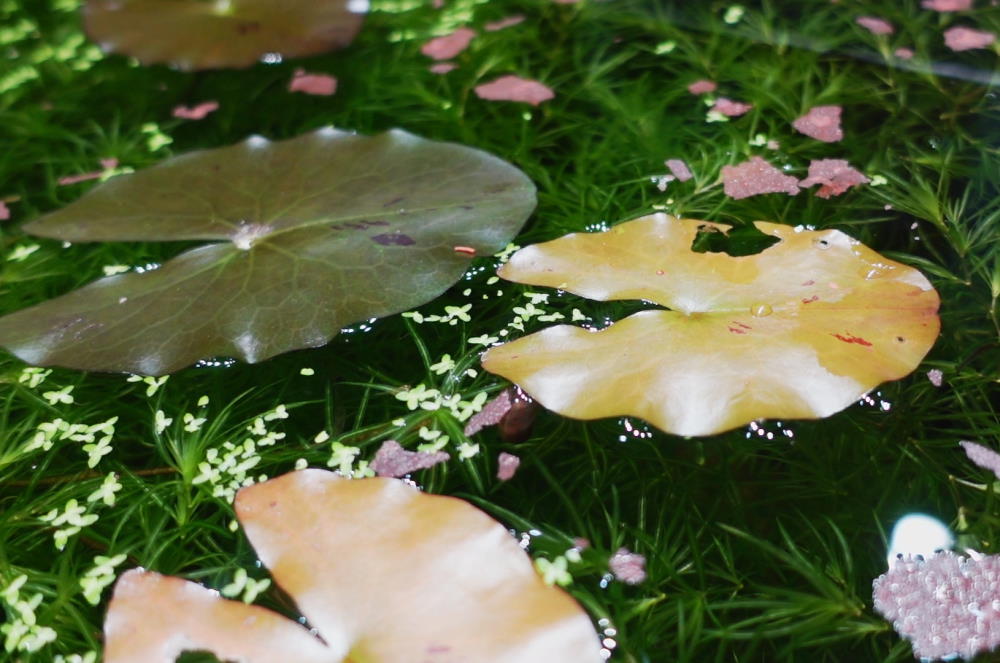How to Care for a Dwarf Aquarium Lily
Wish you could put lily pads in your aquarium? Check out the dwarf aquarium lily or Nymphaea stellata. This beautiful, easy-to-grow species hails from India and Southeast Asia and is often used as a midground or background plant. Its bulb spouts a compact bush of 4-inch, arrow-shaped leaves and then eventually extends long stems of lily pads that float at the water surface. Compared to your typical green aquarium plant, the dwarf lily provides unique textures and interesting colors ranging from reddish-bronze to pinkish-green.
How Do You Plant a Dwarf Aquarium Lily?
If you purchase from Aquarium Co-Op, you will receive a potted plant with a bulb. This potted lily may arrive with a few leaves growing from the bulb, but since the leaves are delicate, it is common for them to be damaged in transit. More leaves will grow about a week to 10 days after being planted in an aquarium.
When you receive the plant, remove the rock wool from the plastic basket, and gently split the rock wool into two halves to free the bulb. Carefully remove the bulb from the rock wool, and then place it in your aquarium. To plant your lily, place the bulb on top of the substrate so that the leaves are facing upward and the roots are pointed toward the ground. Do not bury the entire bulb. It may float initially, but once it has soaked in the water, it will sink again. The roots will eventually grow into the substrate and hold the bulb in place.

Once the lily has sprouted leaves, you can slightly push the bulb into the substrate without covering up any of the new shoots.
Why is the bulb getting moldy or covered in a fuzzy growth? When organic objects like driftwood or plant bulbs are placed underwater, they often grow a layer of biofilm made of harmless bacteria and other microorganisms. This can look like white mold, fluffy fungus, or short tufts of gray hair is covering the bulb. If you have algae eaters, shrimp, or snails in your aquarium, they will often consume this fuzzy layer for you. As long as the bulb is firm to the touch and eventually starts sprouting, the biofilm is not dangerous to the lily and doesn’t spread to other plants.

Most lilies sprout fairly quickly after being submerged in water, producing many leaves that emerge from a single point on the bulb.
How Do You Care for a Dwarf Lily?
This hardy plant can grow in a wide range of tropical temperatures from 72-82°F (22-28°C). It doesn’t require CO2 injection and can live in aquariums with low to high lighting. Once it starts sending lily pads to the top, you may need to prune a few of the surface leaves so that they won’t block light from reaching the other plants in the fish tank.
Dwarf aquarium lilies, like most live aquatic plants, are great for consuming organic waste compounds and improving overall water quality for your fish. However, once they get established in your tank, lilies tend to grow rather quickly and may need additional nutrients in the form of liquid fertilizers and root tabs.

Trim back some (but not all) of the lily pads if they begin to cover the entire surface of the water.
Can You Propagate a Dwarf Water Lily?
When your dwarf aquarium lily is feeding and growing well, it may begin to send out little shoots with daughter plants attached to them. Simply cut off the side shoots and replant them in a desired location in your fish tank. If your plant is not thriving for some reason, it may be suffering from a nutrient deficiency, so take a look at our plant nutrients article to help you troubleshoot the issue:




